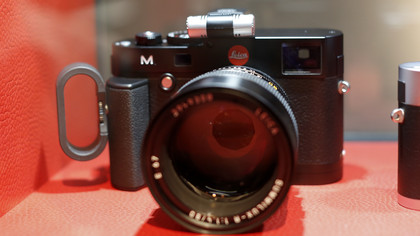Why you can trust TechRadar
I was interested to see what Leica would do with a CMOS sensor on their first mission together, and I've been very impressed. Raw files are full of information and provide fantastic flexibility, and even best quality JPEGs allow a great deal of manipulation before they show the signs.
I've enjoyed the moderate colours the M produces that, combined with restrained contrast and good dynamic range, lend images a sense of reality that some digital cameras have forgotten is important.
In normal conditions the 'Classic' metering is surprisingly accurate for such a seemingly simple system, and when Live View is in use we have – for the first time in an M body – the choice between spot and 24-zone multi-field reads.
The camera isn't noise-free and allows a speckling of dots and grit to appear in even the lowest ISO settings – if you look hard enough. Noise though didn't become an issue in any of my shots throughout the test.

While noise is present early on, its appearance doesn't accelerate as you might expect. At ISO 800 images viewed at normal sizes are effectively clean, and only at ISO 3200 and 6400 does it become obvious enough to see without pixel-peeping.
Obviously there is no AF to comment on here, as the M 240 is an entirely manually focused camera, but it is worth mentioning that the dual image rangefinder is about as fast as a rangefinder can be and worked faultlessly and effortlessly in all conditions. The only time it will struggle is when faced with a wide area of regular patterning, in which it can't tell one line from another. That isn't a Leica fault, just the nature of systems that use dual image focusing.
Current page: Performance
Prev Page Build quality and handling Next Page Image quality and resolution